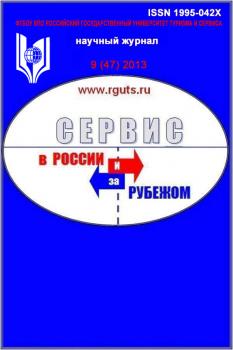In the course of rubber bowl amortization, the surface wears outs in the contact zone due to a number of factors, the most significant of which are related to the mechanical, physical and / or chemical, and other aspects of the leather working process, and are coupled with high humidity and corrosion environment. From a theoretical and practical perspectives, it is the fatigue wear, which causes hardware fault and makes repair and restoration inevitable. The authors carry out an experimental evaluation of the surface thickness.
bowl, highly elastic materials, wear, leather-working machines, microcrack, strain, rubber layer, destruction
Изнашивание в процессе эксплуатации кожевенных машин, так называемых прижимных, обрезиненных валов, представляет собой процесс разрушения их поверхности в зоне рабочего контакта вследствие действия ряда факторов. В их основе лежат механические, физико-химические и другие явления, сопровождающие процесс обработки кожевенных материалов с относительно высокой степенью влажности [1; 4]. Наибольший теоретический и практический интерес при этом представляет усталостный износ, характеризующийся постепенным накоплением элементарных разрушений, приводящих к дальнейшему возникновению и развитию микротрещин [3].
Инициирование и рост микротрещин в зоне наибольших растяжений, как правило, за единичными выступами твердой поверхности взаимодействующего контртела, обычно ножевого вала, с позиций термофлуктуационной теории прочности высокоэластичных материалов представляет определенные трудности. Так, молекулярная неупорядоченность резинового слоя в какой-то мере перекрывает эффект флуктуаций [5], что можно отнести
1. Ivanov, V.A., and Rashkin, V.V. Tendentsii i perspektivy razvitiia oborudovaniia kozhevennykh proizvodstv [Leather-working equipment: development trends and prospects]. “lektrotekhnicheskie i informatsionnye kompleksy i sistemy [Electrotechnical and information complexes and systems]. Vol. 8. 2012. № 1. pp. 47-52.
2. Rashkin, V.V., and Ivanov, V.A. Tendentsii i perspektivy razvitiia oborudovaniia kozhevennykh proizvodstv [Leather-working equipment: development trends and prospects]. “lektrotekhnicheskie i informatsionnye kompleksy i sistemy [Electrotechnical and information complexes and systems]. Vol. 8. 2012. № 1. pp. 40-46.
3. Ivanov, V.A., Shagunov, D.V., and Baikin, S.D. Modernizatsiia oborudovaniia servisa kak sposob rashreniia ego tekhnicheskikh vozmozhnostei [Equipment updating as a way to extending its technical potential]. Elektrotekhnicheskie i informatsionnye kompleksy i sistemy [Electrotechnical and information complexes and systems]. Volume 8, 2012. № 2. pp. 2-8.
4. Poturaev, V.N., and Dyrda, V.I. Rezinovye izdelia mashin [Rubbers in machinery]. Moscow: Mashinostroenie Publ., 1977. 216 p.
5. Kammer, H.W. Unified theory of rubber and tier friction. Eng. res. bulletin B-94. The Pennsylvaniy State University, July 1966. P. 6-7.
6. Kammer, H.W. Theory of rubber and tier friction. Eng. res. bulletin B-94. The Pennsylvaniy State University, July 1968. P. 8-9.
7. Shallamach, A. Dependence of rubber friction. Proc. phys. soc. Vol. 65. 1964. P. 667-681.





